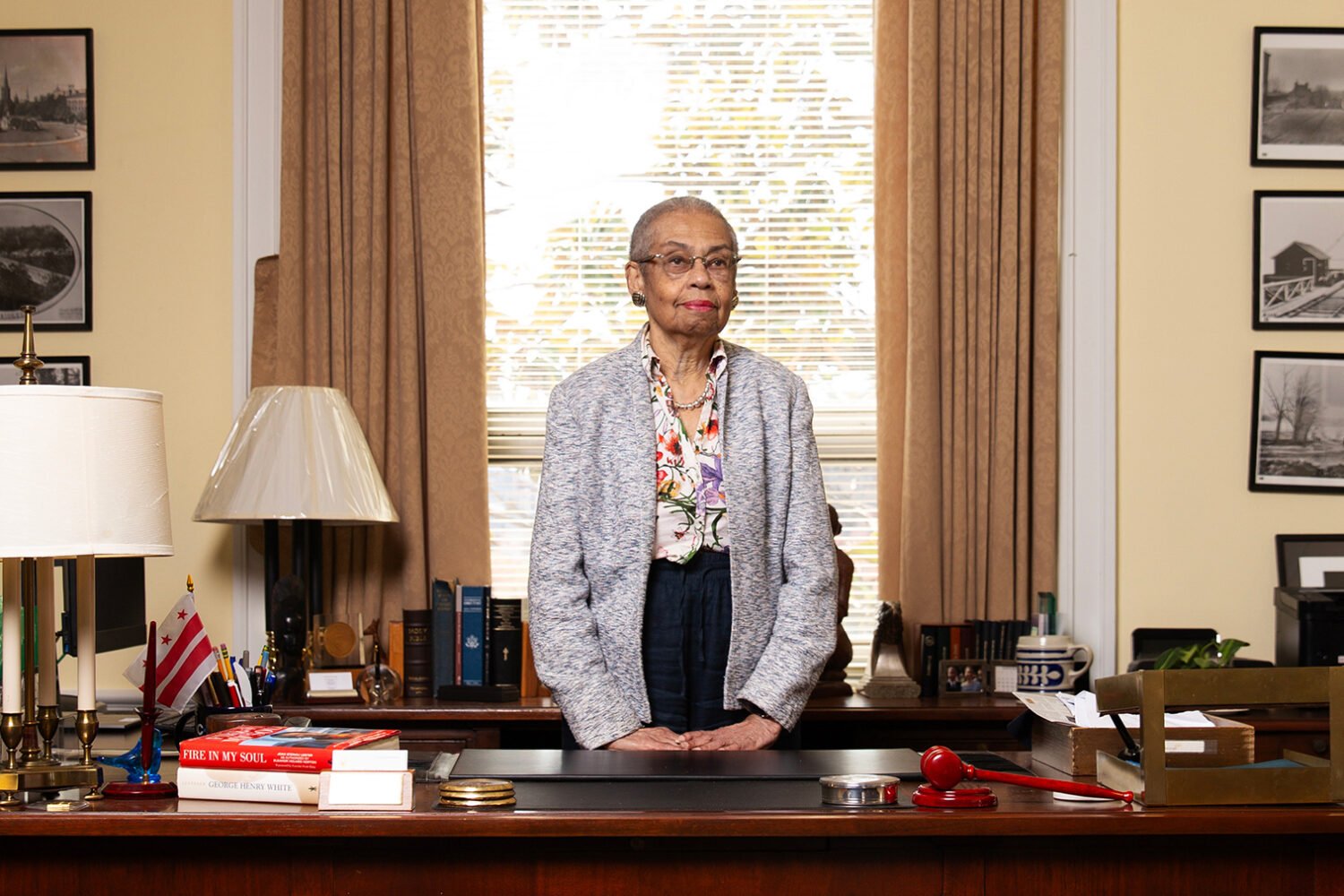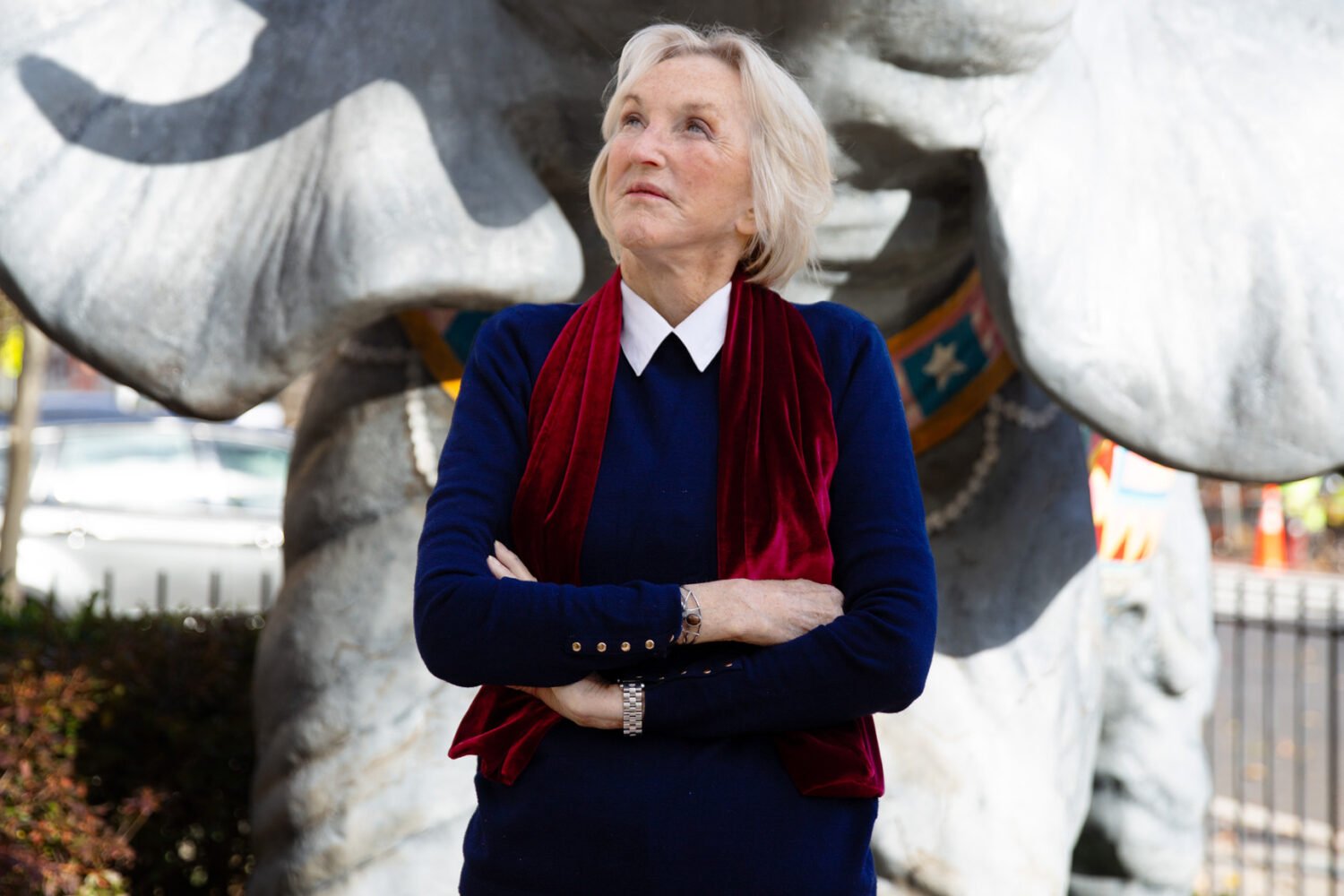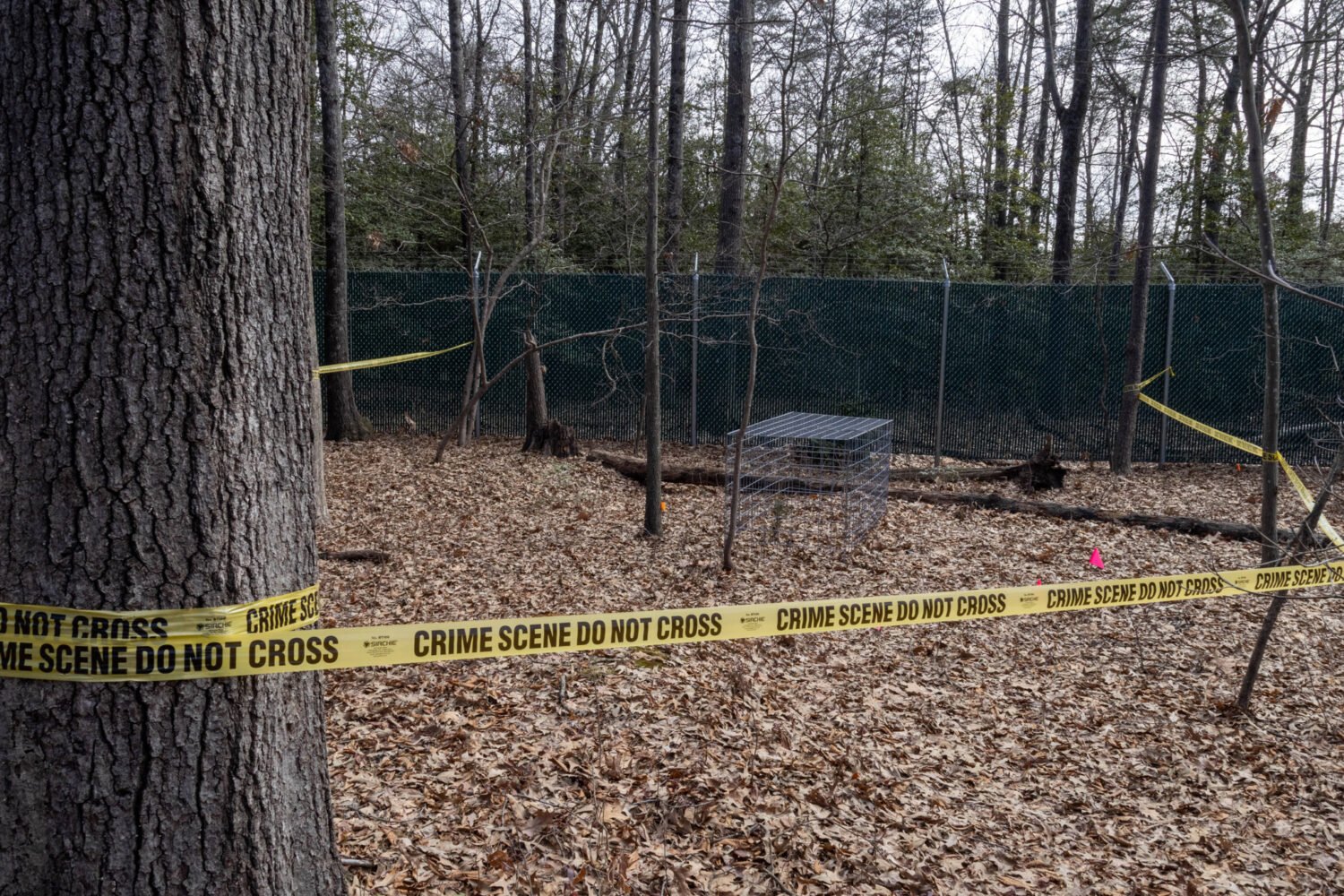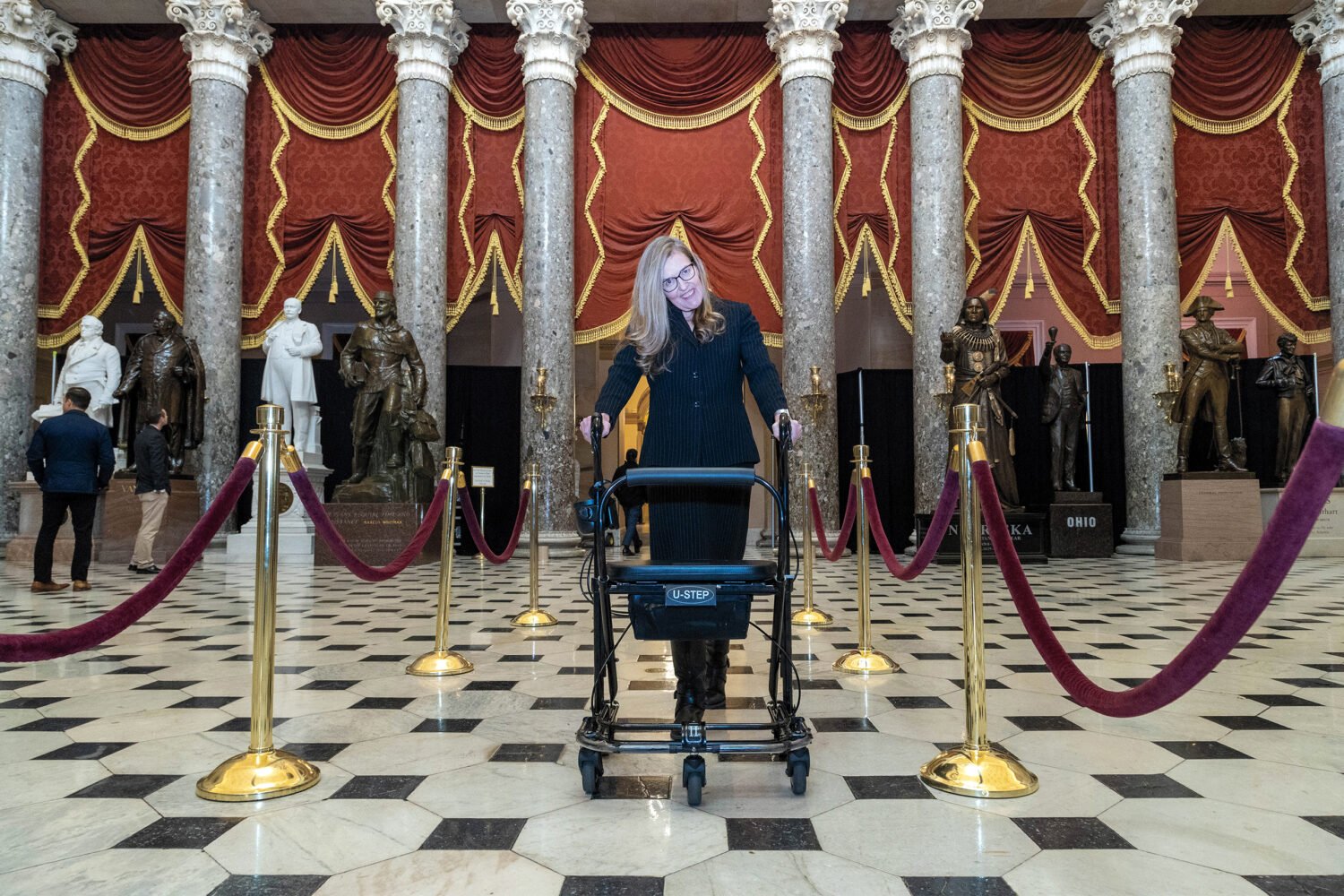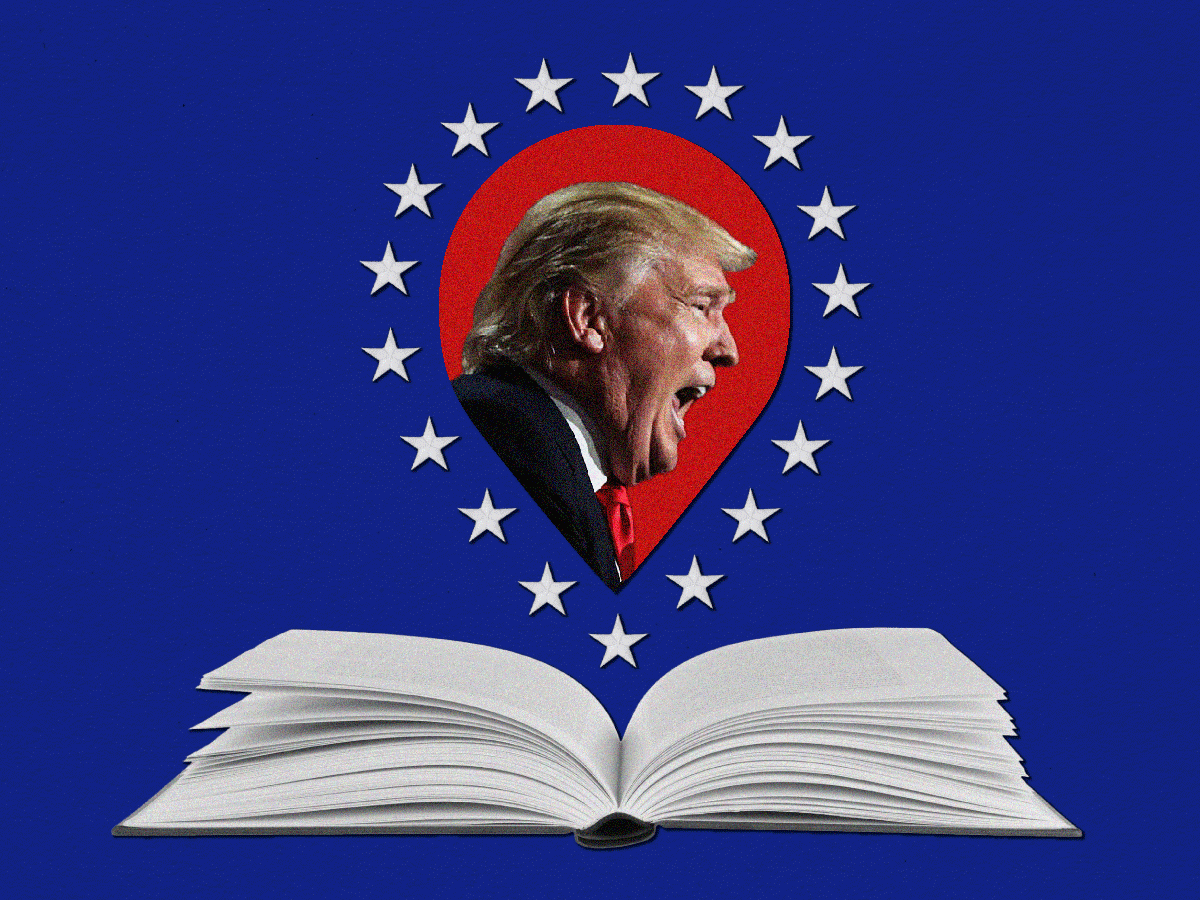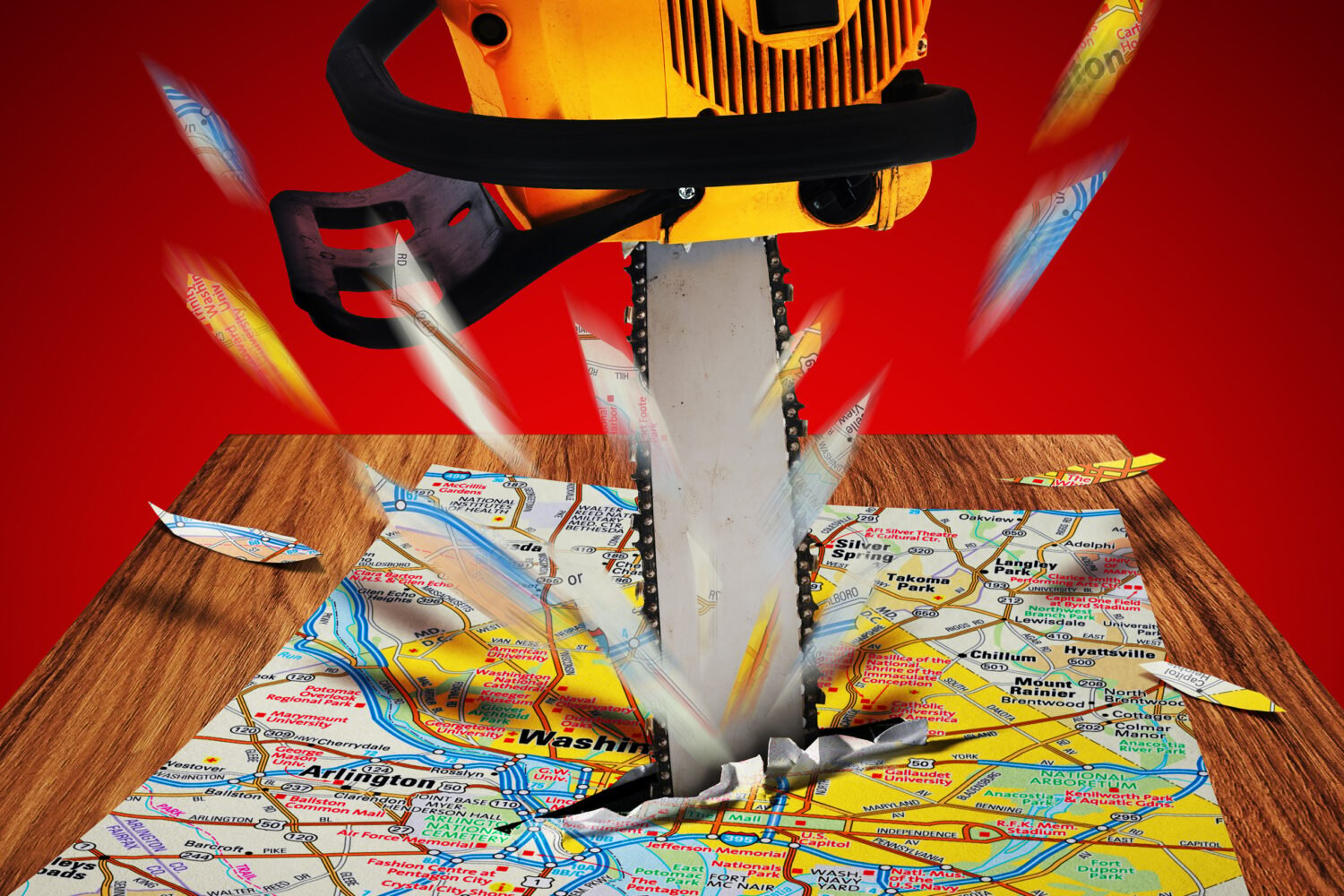On his first-ever trip to the White House, Matt Boyle blows right past the security gate without stopping to show his identification. An annoyed Secret Service agent thumps on the glass and motions for him to return. “Oh,” he says—startled.
It’s January 31, the 12th day of an administration that Boyle, Washington editor of Breitbart News, helped install. He’s here for his first press conference, the morning after the President ousted his acting attorney general, Sally Yates, for refusing to enforce his travel ban. As Boyle follows the path toward the briefing room, he stops, fishes out his cell phone, and snaps a picture of the executive residence: “Pretty cool, huh?”
Boyle has no assigned seat, so he finds a spot to stand at the front. It’s irritating, he grumbles, that the first row is reserved for establishment networks like CNN, ABC, CBS, and NBC. “I don’t think that these people are going to be relevant for much longer,” he says, gesturing at the front row. “The viewers will all be dead in ten years.”
Boyle doesn’t seem to notice that the lapel on his suit jacket—bought specifically for Donald Trump’s election-night party—is jutting skyward and one of his shoes is untied. As he waits for things to get started, his knees bounce and he rocks against the wall. Yet he insists he’s perfectly calm. “I’d get nervous if I was meeting Tom Brady,” he tells me. “Politicians—it’s nothing.”
But when press secretary Sean Spicer finally calls on him, Boyle sounds less confident. “Sean, uh,” he begins. “The, Sally Yates was obviously, uh, an Obama appointee, was holding over through the transition, uh, how many more of them are there throughout the government, and uh, and uh, uh, and at this time through the c—as the trans, uh, transition and confirmation process plays out, and do you expect any more problems from any of the other ones?”
The less-than-smooth performance might have embarrassed another journalist. But Boyle doesn’t seem bothered at all. After the briefing, he steps back outside into the sunshine and says, “That was fun. I’m going to do that again.”
He might seem like an amateur—sniping at competitors, stammering on his big day—but for a 29-year-old who now has the ear of the White House, life doesn’t get much better. Seven years ago, Boyle came to town a rudderless young man in search of a captain and a cause, fell under the influence of powerful figures like Breitbart chairman Steve Bannon, and became a human Molotov cocktail against the political establishment. Sure, he may have spent many of his Washington years as the laughingstock of the political press corps—ridiculed for his fanatical writing, his peculiar personality, and his fawning treatment of Trump. One former colleague of Boyle’s described him as “Forrest Gump with a press badge.” It didn’t matter. By the end, he was flying on Trump’s private jet and interviewing him in the Oval Office.
How did an accidental warrior become one of the most powerful media figures in the nation’s capital? The answer involves a reversal of fortune that could only have occurred in Trump’s Washington.
Although Breitbart News’s readership is only a fraction of Fox News’s or BuzzFeed’s, it nearly tripled during the presidential race, according to comScore. In November 2016—as the presidential campaign reached its peak—the site had almost 23 million unique visitors. And while it was once dismissed as a safe space for conspiracy theorists and white nationalists, it now enjoys access to the President. Three former employees—chairman Steve Bannon, reporter Julia Hahn, and editor Sebastian Gorka—are White House advisers.
Boyle joined Breitbart in late 2012. Only 25, he was in need of guidance. He’d come from another right-wing outlet, the Daily Caller, where colleagues remember him working in a perpetual state of hyperactivity—making angry phone calls from a desk buried under empty Mountain Dew bottles and becoming so excited that he occasionally damaged keyboards while typing. He often worked until 4 am and woke up at noon, and he says he drank heavily at bars in Dupont Circle or Chinatown. “I was still kind of a mess,” he says.
The new job, and the new boss, changed him. Bannon was the disciplinarian and mentor Boyle needed. If a story broke and he wasn’t on it, Boyle knew he’d face Bannon’s volcanic temper. “It was motivating,” he recalls. “I didn’t want to be yelled at.”
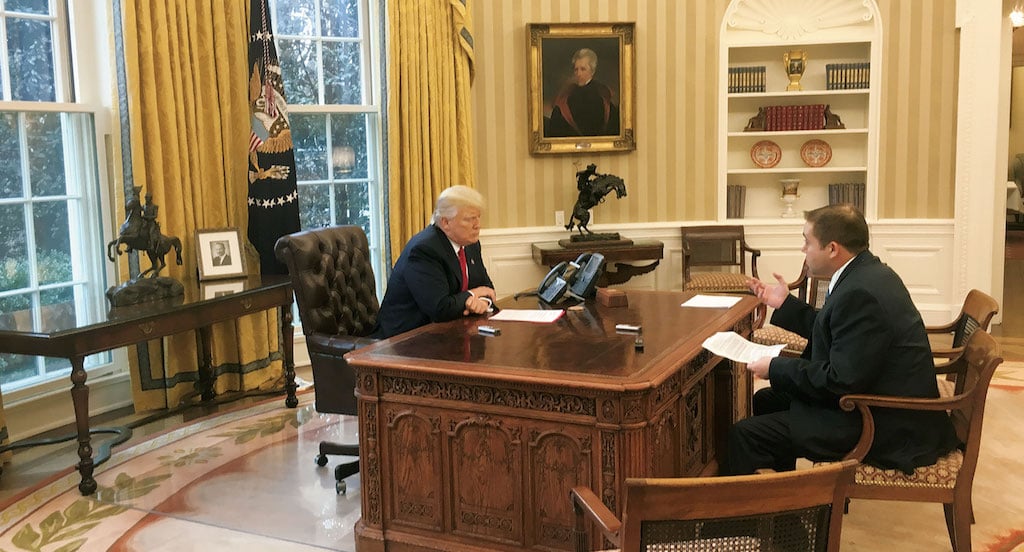
While the two shared similar middle-class childhoods, Boyle considered himself a “wayward” twentysomething, whereas Bannon—the conservative filmmaker, ex–Goldman Sachs banker, and onetime Navy officer—seemed to Boyle like a “student of history” who “understands the affairs of the world.”
The two bonded over football and their New England ties. Boyle grew up in the Boston suburbs, and Bannon graduated from Harvard Business School. Boyle says both are die-hard New England Patriots fans who would discuss the team’s performance after games. In 2015, Bannon took Boyle to Boston to watch a football game between Boston College and Notre Dame. Boyle uses the analogy of the Patriots to explain how he and Bannon worked together: “I’m the quarterback. I’m Tom Brady. And he’s [head coach Bill] Belichick.”
Kurt Bardella, Breitbart’s former publicist, puts it another way: “If there was an issue that Bannon had with anyone in the political establishment or the media, it was Boyle who he would kind of sic on him. It was very much like a general kind of commanding his favorite soldier to go on into the fight and win it.”
DC had become ground zero for the organization’s fights. Founder Andrew Breitbart had less interest in politics than in battling enemies in the film and media industries. After he died in 2012, Bannon increased the site’s coverage of DC and ratcheted up its aggression. Instead of focusing its attacks just on liberals, Breitbart also targeted political consultants and moderate Republicans willing to compromise with Democrats.
“Anybody that [Bannon] considers establishment DC consultant class, he wants them ruined,” says a former Breitbart News staffer. “It’s not enough that he wants to win an election—he wants them destroyed. He wants them financially destroyed. He wants them divorced. He wants them homeless.” Bannon did not respond to multiple requests for comment.
Boyle was already skeptical of Washington’s entrenched political and media castes, but under Bannon’s tutelage he says he came to view them as part of a “globalist elite” intent on hijacking the democratic process from ordinary Americans. In the “war” to expose them, no target was off-limits. In 2013, Boyle tossed aside longstanding journalistic traditions—and legitimate safety concerns—when he identified the location of Sasha and Malia Obama’s spring-break vacation in an “exclusive” story. The following year, he reported on allegations that John Boehner and Eric Cantor “might be trying to help the Obama administration cover up the Benghazi scandal.” Five months later, he wrote a story about a joke made by Mississippi’s mainstream-conservative Republican senator, Thad Cochran, under the headline THAD COCHRAN: I GREW UP DOING ‘ALL KINDS OF INDECENT THINGS WITH ANIMALS.’
“I can scare the shit out of people,” Boyle tells me. “And I have a lot of fun doing it.”
Readers loved it, too. Once at a Tea Party rally, Boyle tried to question the congressmen in attendance, and when he identified his employer, the crowd exploded in cheers. “Let’s hear it for Matthew Boyle of Breitbart News,” far-right Texas Republican Louie Gohmert told the audience.
According to Jonathan Strong, Boyle’s former editor at Breitbart, who recently launched Legis, a hedge fund, “Boyle has two modes: murder and blowjob.”
“I can scare the shit out of people, and I have a lot of fun doing it.”
Around the time Trump launched his presidential bid in 2015, the site, according to critics, became both a mouthpiece for the campaign and a nuke aimed at anyone who knocked the candidate or Breitbart itself. Take what happened to Republican consultant Rick Wilson after he called out Boyle’s “reckless, sloppy reporting” in a July 2015 tweet. Boyle and Bannon began trying to obtain the names of Wilson’s clients, according to a former Breitbart staffer. “And this isn’t because they want to write an investigative piece of journalism,” the ex-staffer says. “It’s because they want to call [the clients] and harass them into firing Rick.”
According to e-mails obtained by Washingtonian, Bannon forwarded a list of questions to Boyle and a colleague who was writing a story about one of Wilson’s clients, a GOP Senate candidate. Among the questions Bannon wanted his reporter to ask the candidate was “One of your consultants, Rick Wilson, Tweeted an article calling Breitbart News Network ‘racist.’ . . . [W]hy are you employing someone who is calling conservatives racists?”
Four weeks later, during a heated exchange with Breitbart editor-in-chief Alex Marlow on CNN, Wilson called Trump’s supporters “low-information” voters and compared Breitbart’s coverage of Trump to “Pravda reporting the five-year plan for Stalin.” Breitbart subsequently drew attention to the comments by publishing stories about them. In short order, Wilson became the target of a vicious online hate mob.
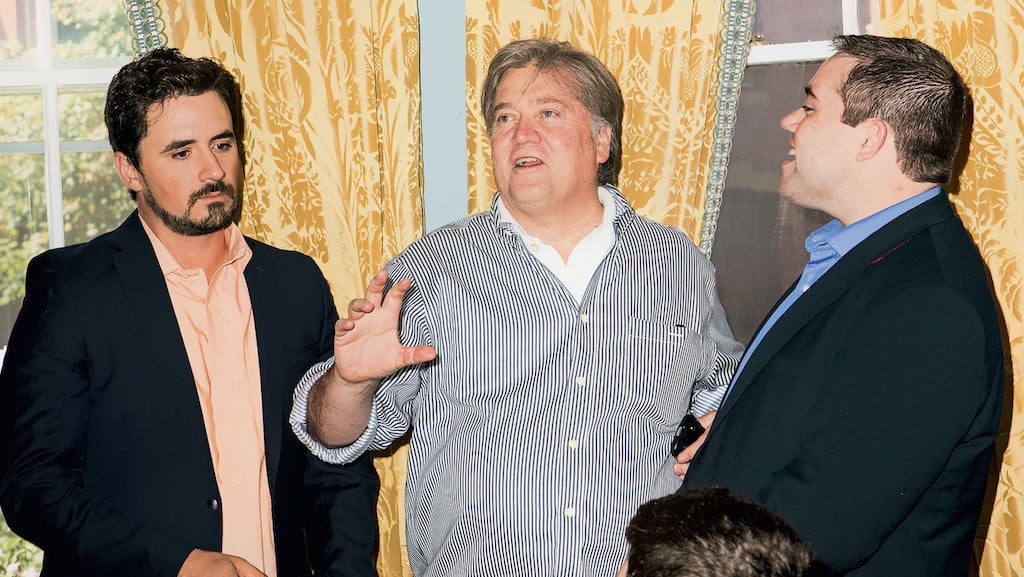
Pizzas—and later Korans—began arriving at his house. Death threats landed in his e-mail in-box. According to Wilson, rumors spread on the internet that his son ran a pornographic website dedicated to urinating on prostitutes and that his daughter had an out-of-wedlock child with an African-American father. “I get this anonymous e-mail from this guy,” Wilson says. “It’s like, ‘Your nigger-loving family is going to die. I am going to rape your daughter. I’m going to have big black bucks rape your daughter.’ ” Someone even tracked down Wilson’s daughter at college and left threatening notes on her door.
Marlow says the site has no control over how its audience reacts to its stories, adding that because of its readership’s size, “there’s gonna be certain people that might read Breitbart’s content and go send mean messages to people.”
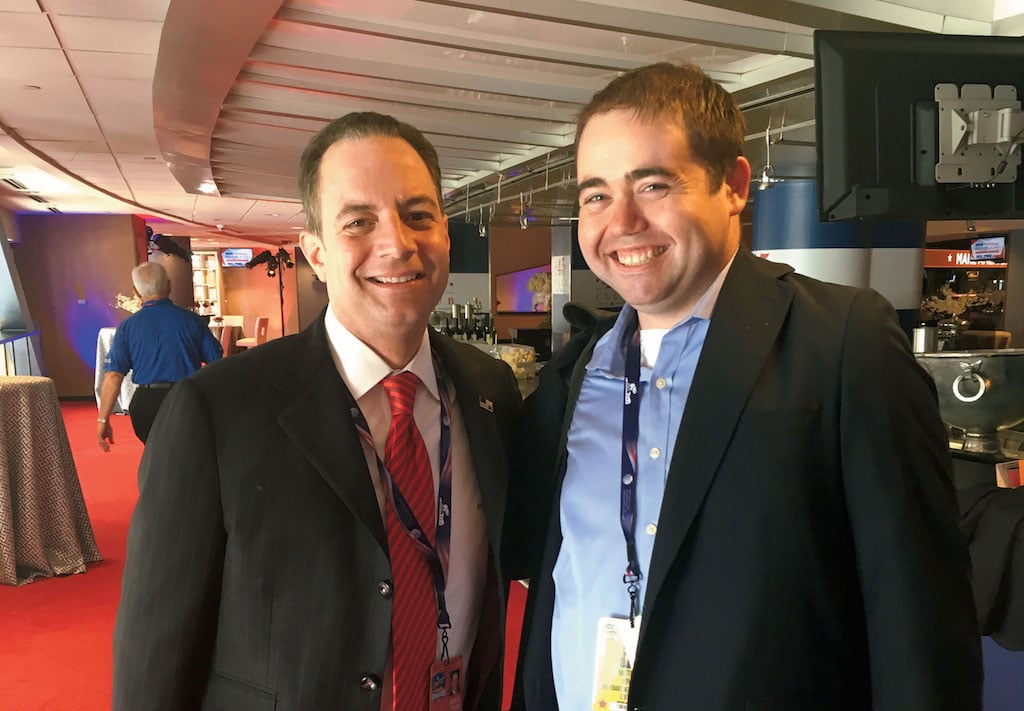
A former Breitbart staffer believes the organization published the stories knowing its readers would respond by targeting Wilson. “I wouldn’t even call [their tactics] a dog whistle,” the ex-staffer says, “because a dog whistle is silent. This is putting out the bat signal.” According to Boyle, “that’s ludicrous and insane. We don’t operate like that.” He admits trying to obtain a list of Wilson’s clients but says he did so for a story (still in the works) about Wilson’s business.
Although Wilson doesn’t believe that any Breitbart staffers participated directly in the harassment, he thinks the attack was ordered by Bannon and “his little flying-monkey minions.”
“Let me say this,” Wilson tells me, “Matt Boyle would not say that shit to my face in a billion years.”
Boyle’s efforts delighted the boss. Bannon often described him as a “honey badger.” It was Bannon’s highest form of praise—and the company’s mascot—because honey badgers are the animal kingdom’s most fearless creatures.
But Bannon could be hard on Boyle, too. “Bannon mistreated him terribly. Yelled at him, was cruel to him. Belittled him in front of other people. He was just awful to him,” says a person familiar with their relationship. “I’m sure on some level Boyle resented it, but he took it because the promise of being part of something bigger made it worth it for him.”
Boyle saw the criticism differently. “Bannon is like a drill sergeant,” he says. “He’s tough. But it’s extraordinarily rewarding when you deliver.”
Boyle delivered so well that in the fall of 2015, Bannon promoted him to run Breitbart’s DC bureau. By then, “Boyle was really kind of mini-Bannon,” says Dustin Stockton, a former Breitbart staffer who now runs a pro-Trump PAC. “He developed to be that aggressive, hard-hitting person that Steve was.”
When Breitbart reporter Michelle Fields was looking into a story about the possibility that GOP leaders would drop demands for tighter refugee screening during spending negotiations, she e-mailed Boyle: “So basically they’re caving to Dems.” He replied: “Go big. Rip their f—ing faces off.”
After the Daily Beast’s Tim Mak asked Boyle for comment for a profile of White House adviser Stephen Miller—a friend of Boyle’s—Boyle responded: “TIM MAK PRINTS FAKE NEWS. HE PRINTED FAKE NEWS ABOUT IVANA TRUMP, EARLY IN THE PRESIDENTIAL ELECTION AS PART OF A SCHEME TO DESTROY THE NOW PRESIDENT-ELECT. DAILY BEAST IS FAKE NEWS WITH HIM ON BOARD. READERS SHOULD BE HIGHLY SKEPTICAL OF ANYTHING DAILY BEAST PRINTS UNDER TIM MAK’S BYLINE.”
“Bannon mistreated Boyle terribly. I’m sure he resented it, but took it because of the promise of being part of something bigger.”
People who knew Boyle were startled by his radicalization. Helena Särkiö, his academic adviser at Flagler College in St. Augustine, Florida, says she no longer felt comfortable inviting him to speak to her students because his discussions “started to sound a bit like conspiracy theories.” When the college’s student newspaper removed a controversial online column written by a conservative student, Särkiö says, Boyle left her a fuming voicemail in which he threatened to use his media platform to target the school if the article wasn’t reposted. “It was a crazy message,” she recalls. “I didn’t even reply to it.” The article remained offline, Särkiö says, and Boyle never made good on his threat. Boyle says he did consider writing a story about the incident and the fallout, and he contacted the school to stand against “political correctness run amok.”
When push came to shove—literally—he was willing to turn on a former colleague who crossed Trump. In March 2016, Michelle Fields alleged that she had been manhandled by Trump’s then campaign manager, Corey Lewandowski, at a news conference. After offering up a weak defense of its employee, the website questioned her account. Fields soon announced she was joining HuffPost, and according to Yahoo News, Boyle e-mailed a document—which purported to be an open letter from the liberal community to HuffPost—to an activist on the left. “We were disappointed to see your hiring of Michelle Fields,” the letter read. “Do you really think Michelle Fields will do serious investigative reporting on Donald Trump’s tax returns?”
Boyle now admits to writing and sending the letter to one activist but says he never tried to get Fields fired. At the time, however, he apparently tried to conceal his handiwork—the e-mail’s subject line reads: “OFF RECORD—YOU DID NOT GET FROM ME.”
With a pear-shaped torso and a pale, chubby face, Boyle doesn’t look like much of a warrior. He’s usually jacked up on Mountain Dew or Red Bull, he puffs through a pack of Marlboro Lights a day, and he does not exercise. Colleagues have long been baffled by his round-the-clock energy—Boyle says he can write as many as 30 stories a week—in light of his health habits. “The word nutrition is the wrong one to use,” says Raheem Kassam, Breitbart’s London editor and a buddy of Boyle’s. “I’ve either only ever seen him eating cheese curds or tater tots and drinking Bud Light.”
One reason for his productivity: “There’s not much of a life outside of reporting for me—and Breitbart,” says Boyle. “I mean, I still have my family and my parents and brother and whatnot, but generally speaking, this is my life.” He lives with his younger brother in a Capitol Hill apartment, and his hectic work schedule, he says, makes having a girlfriend impossible. For fun, he hangs out at local bars with a pack of fellow reporters, sources, and other pals he’s met through work.
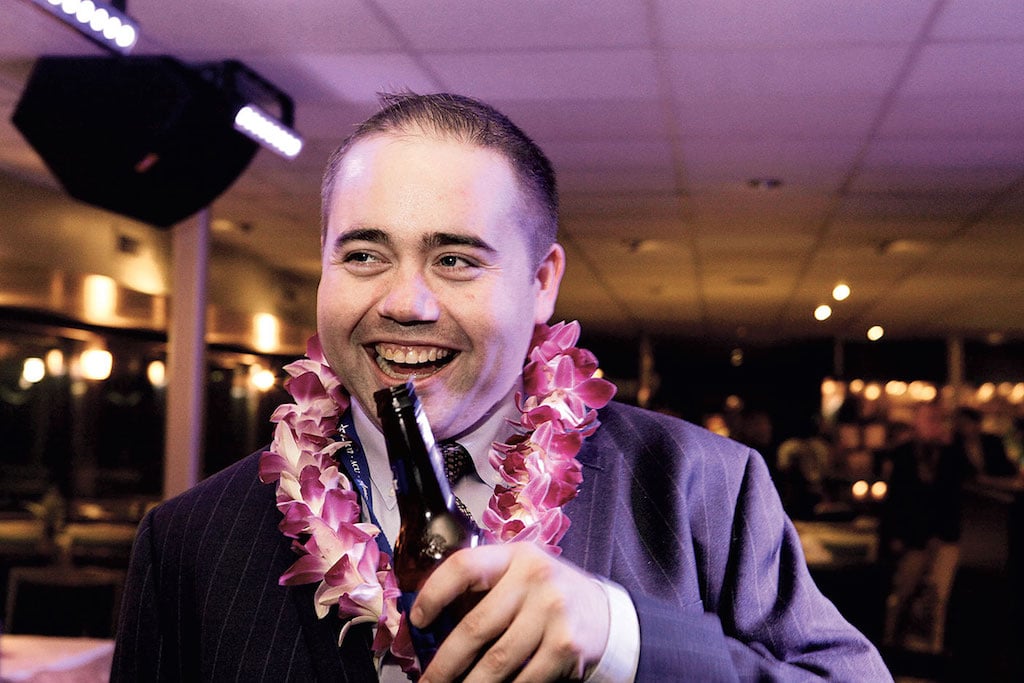
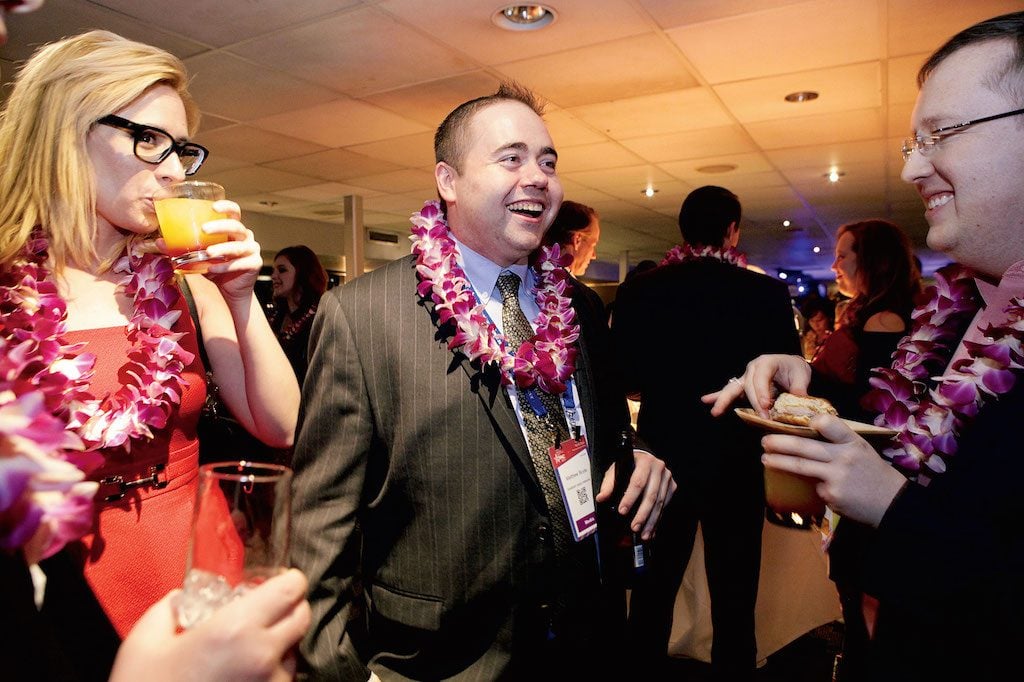
If you spend enough time with Boyle, you’ll notice his tics. When he’s listening to someone talk, for example, his own lips sometimes move as if he’s speaking, too. It’s subtle but unusual nonetheless, the kind of anomaly that others say makes him seem a little off. Boyle says he doesn’t make friends easily, and “it’s gotten progressively harder, given what I do.”
He grew up in Canton, Massachusetts, where his parents owned a video rental store and his father also worked the deli counter at the local Shaw’s supermarket. Boyle’s dad earned an MBA, was promoted to Shaw’s corporate office, and later received the first of several job transfers that took the family from one unfamiliar place to the next. Along the way, Boyle changed colleges three times in as many years. First it was Boise State University in Idaho, then Normandale Community College in Minnesota. When he got to Flagler in St. Augustine, his academic adviser there, Särkiö, says he struck her as a socially awkward kid “looking for a community that would accept him.”
Flagler classmates, she recalls, “always thought he had Asperger’s. That was their thing. They always thought that there was something really strange about him.” In addition to his physical tics, Boyle could mishandle basic human interactions. “Girls wouldn’t go out with him,” she says, recalling him once discussing his frustrations with his dating life. “He’s got those big baby cheeks, and you just wanted to be like, ‘Oh, Matt.’ ” (Says Boyle: “I had like two separate girlfriends when I was at Flagler, I’m pretty sure.”)
Boyle came to journalism by happen-stance. He opened up his college catalog and did “the whole eeny-meeny-miny-moe thing.” But he was immediately hooked. He often pulled aside his professors after class for extra help on his coursework or with the articles he was writing for the school newspaper, which he coedited during his senior year. “This isn’t the Columbia Journalism School or Syracuse [University] or one of those—it’s a teeny-weeny little college, and when you get a kid who is that interested and that eager and actually has some talent, you want to nurture that,” says Rob Armstrong, one of Boyle’s journalism professors. “I thought he would probably end up at some big paper, maybe the Post.”
The Post wouldn’t have him, though. Nor would Politico, CNN, Washington City Paper, or any of the DC outlets where he applied for jobs in 2010 after learning that he’d been accepted to the master’s program at American University: “None of them wanted anything to do with me,” he says. The only publication that got back to him was Tucker Carlson’s Daily Caller.
Boyle says he voted for Barack Obama in 2008, but he had since drifted to the right. He knew of an upcoming Tea Party rally near Flagler’s campus—a Caller editor said she’d consider publishing a story about it. Having just been rejected by Washington’s top media outlets, Boyle says he got to the rally and felt “a common cause” with protesters. “The same political class that’s ignoring them,” he says, “is ignoring me.”
Things didn’t get easier once Boyle relocated to the home of that political class. At AU, he regularly clashed with students and faculty. In the fall of 2010, for example, Boyle says his professors assigned students to write articles about Michelle Obama’s health-and-wellness initiative. “All of the other people in the class wanted to do puff pieces,” Boyle recalls. He took the opposite approach. His story—headlined “White House Garden Sits on Contaminated Soil”—noted that the National Park Service had discovered lead contamination in the White House vegetable-garden soil, reported that the “supposedly” organic garden actually didn’t meet government standards for such a distinction, and quoted an Arizona restaurateur calling the First Lady “a poser.”
The school never published the story, and Boyle saw the rejection as proof of his exclusion from the network of insiders who ruled Washington. “Why wasn’t I getting the same treatment that others there were?” Boyle says. “Because I was not of, by, and for their elitist mentality. I was not in their club.”
Before long, Boyle had dropped out of AU and was working full-time at the Caller. He began breaking big news almost immediately. In July 2011, his reporting unraveled a $53-million federal procurement scam that eventually resulted in prison sentences for a State Department contractor and her husband. “I’m like, holy crap!” Boyle says. The Justice Department “didn’t even know until Matt Boyle wrote a little story on Daily Caller. The Feds raid their house and everything. It was great.”
Boyle worked closely with Carlson, the top editor, to improve his writing. He came to view Carlson as a mentor and the Daily Caller as a place where he fit in. “I was a star there,” Boyle says. “Everybody got along with me.”
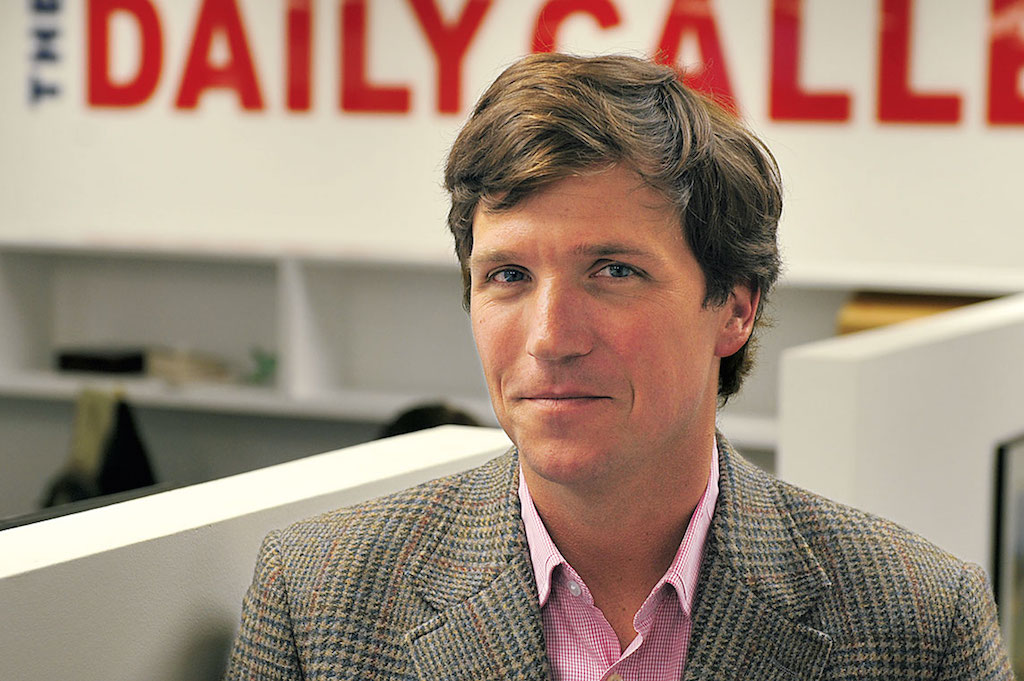
But behind his back, Boyle was a subject of ridicule. Colleagues poked fun at his crusading approach and referred to the office he shared with another aggressive reporter as “the insane asylum.” After leaving the company, a former colleague crank-called Boyle and pretended to be a former USDA employee with a potential news tip about government waste and fraud. The prankster claimed to know of reports—swept “under the rug” by officials—that food-stamp recipients were using their benefits to buy horse manure for fertilizer, according to a recording of the call. He even suggested a headline Boyle might use for the story: “The Shit You Can Buy With Food Stamps.”
Although Boyle laughed at that, he appeared to take the tipster seriously: “So do you have any, like, recommendations on where I’d start looking?”
After the call, Boyle approached Carlson and expressed interest in running down the tip, according to a second former colleague. But no story was ever published.
Boyle was useful for Carlson to have around—he generated a lot of web traffic, which Carlson valued. And Carlson publicly encouraged and stuck up for him amid criticism. Yet according to a former staffer, when Boyle wasn’t in the room, Carlson would join in on the mockery, using the same pop diagnosis that had been thrown at Boyle during college: He “would make fun of him and say that he had Asperger’s.” Carlson declined to comment.
When I tell Boyle about this, he laughs nervously. “I always had a good relationship with Tucker,” he says. “I don’t know if any of that is true.”
Many others ridiculed him in public. A Daily Caller gossip columnist snarked about a supposed “grassroots campaign” to win Boyle a spot on the Hill’s 50 Most Beautiful people list, and the conservative Washington Free Beacon satirically named him its “2015 Man of the Year.” Boyle sees attacks like these as part of a much broader campaign to discredit his work. “I’m surprised they haven’t gone after my brother and parents yet,” he says. “When you’re doing stories that affect the very way of life of the most powerful people in the country, they will do anything to stop you.”
Although it used to get to him, Boyle says he no longer feels the pain: “You get the shit knocked out of you so much that it doesn’t hurt anymore.”
Colleagues poked fun at his crusading approach and referred to the office he shared with another aggressive reporter as “the insane asylum.”
The Washington insiders who laughed at him probably had no idea that Boyle actually had been diagnosed with disabilities. As a child, he was diagnosed with ADHD as well as dysgraphia, a neurological condition that impairs written expression. Because writing by hand was so difficult, Boyle started using a laptop in elementary school. Doctors also told him he had NVLD, or nonverbal learning disability, which impairs the ability to understand nonverbal communication, such as body language or tone of voice. According to Antoinette Lynn, a neuropsychologist on the board of the nonprofit NVLD Project, nonverbal signals make up about two-thirds of human communication, and those with NVLD often struggle socially. They can be viewed as awkward or annoying.
Although these conditions were tough on him as a child, Boyle says they don’t affect him today: “I don’t want to be a victim. I overcame it. I beat it. I am where I am.” It turns out the same qualities that made him the office oddball also made him a tenacious investigator. Another reporter might swallow a question rather than risk being perceived as rude, but Boyle never stops pushing for answers. While one person with NVLD might struggle in new situations and have trouble making friends, another might find he has the tools to become one hell of a honey badger.
Boyle already had a working relationship with Trump when he read a 2014 BuzzFeed article titled 36 HOURS ON THE FAKE CAMPAIGN TRAIL WITH DONALD TRUMP. In the story—which prompted Trump to fire a press aide—reporter McKay Coppins dismissed the real-estate developer’s aspirations for public office as a 25-year publicity stunt. Boyle, then at Breitbart, was outraged. So, he says, “I step in with Trump and start working to fix it.”
He and the fired press aide, Sam Nunberg, teamed up. “I was like, ‘Why don’t I debunk it? Why don’t I go through the factual errors in this thing and we’ll prove that it’s not true?’ ” Boyle says he asked Nunberg to “get me some facts that McKay left out of his story that I can put in my own story about the whole thing, and we can tell the story that he didn’t tell.”
Five days later, Breitbart published the piece under the headline TRUMP: ‘SCUMBAG’ BUZZFEED BLOGGER OGLED WOMEN WHILE HE ATE BISON AT MY RESORT. In the “exclusive” story, Boyle accused Coppins of “sins of omission” and reported that Trump and a hostess at his club, Mar-a-Lago, thought Coppins behaved like a boor. Also, “Coppins slouched in his chair during his interview with Trump, seeming intimidated,” Boyle wrote.
“Trump and I really hit it off after that,” he says. “The two of us,” he continues, “kind of understood each other.” (At the time, Coppins tweeted: “Trumpworld gets Breitbart to publish a funny list of fabrications about me drinking & ogling women at Mar-a-Lago. lol”)
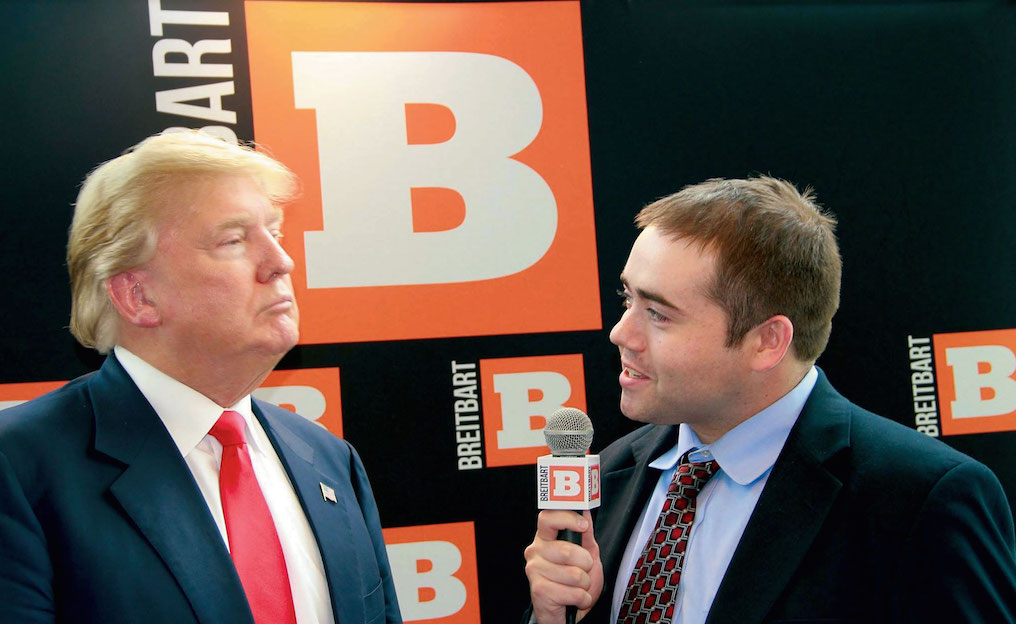
Boyle obtained Trump’s cell-phone number and began interviewing the billionaire regularly, sometimes for up to an hour. “We were on the same side of the same war,” Boyle says. “The same political consultants, the same media people, those same politicians and their staffs were going after him that were going after me.”
Their unusually chummy relationship was on display throughout the race, with Trump going out of his way to compliment Boyle in public, high-five him after a debate, and, once, pull out a marker and autograph Boyle’s shirt. “Trump liked [Boyle] a lot,” says Nunberg. “He calls him ‘my Matty.’ ”
During an interview in Trump Tower, the candidate asked Boyle: “Did you see the latest polls? How am I doing?”
“You’re doing really well,” Boyle told him. “I think you’re going to win.”
Boyle says Trump immediately had his assistant patch his wife through to the speaker phone. “Melania, I have the best reporter in the country right now sitting across my desk from me,” Trump said. “Matt, tell her what you just told me.” Boyle passed along the good news.
When Steve Bannon took over as Trump’s campaign chief, Boyle says, “even more doors opened.” In September 2016—a period when the Post, Politico, BuzzFeed, and other outlets were blacklisted by Trump’s team—Boyle accompanied Trump and top staffers aboard his private jet for an inside look at a campaign trip to an African-American church in Detroit. As the jet was airborne, Trump wrestled with the direction of his speech. Some staffers, Boyle says, suggested he attack Hillary Clinton, while others recommended a more upbeat message. Trump asked Boyle for his opinion. “I think you should give a positive and uplifting speech,” Boyle recalls telling him.
In the end, Trump sided with Boyle and went upbeat. Although he doesn’t think he’s responsible for Trump’s decision, Boyle was thrilled by the performance. “He gives this amazing speech, like absolutely amazing!” Boyle says. “Maybe that won the state of Michigan for him.”
According to a former Breitbart staffer, Boyle often claimed he’d get a position in the administration if Trump prevailed. (Boyle denies this.) “Donald Trump is going to win tonight,” he texted Breitbart colleagues on the night of a primary debate. “This is like the end of the godfather part one. All the other families fall as Don Corleone rises.”
“We will crush them all,” he continued. “Now is the time.”
Breitbart’s ascendancy has created a new Washington parlor game: What, if any, role does Bannon play at Breitbart—and with his former protégé? Boyle says they’re still in regular communication: “We text, e-mail, whatever, back and forth all the time. Occasionally, he’ll call me.” But Boyle insists he’s a “fiercely independent journalist” who works for Breitbart, not for Bannon. His role, he says, is to hold the administration accountable to the promises Trump made to voters.
Given the President’s impulsive nature, it’s unclear if Bannon will survive the civil war with his more liberal nemesis, Jared Kushner, the Trump son-in-law who doubles as one of the President’s closest advisers. If Bannon keeps his job, Boyle and his Breitbart colleagues will keep their direct line to the West Wing. If Bannon goes, they’ll have the power of the Breitbart audience behind them—a 23-million-man army ready to seek revenge.
Either way, Boyle will retain his boldface-name status. His new place in the world was visible at the Conservative Political Action Conference earlier this year. Marching through the convention center at National Harbor, Boyle gave fist bumps (with explosions) to conservative activists and hugged female friends. “This guy’s a rock star right here,” talk-radio host Edward Woodson told me. “This guy.”
Later, while posing for photographs for this article, Boyle gestured to the reporters working at desks behind him. “It’s the opposition party,” he quipped, borrowing a phrase from his mentor. “They’re all lined up. The very fake news.” For another shot, he climbed on top of a platform near a bank of TV cameras. As he approached the edge, someone told him to be careful.
“I’m not going to fall—don’t worry,” Boyle joked. “The world needs me too much.”
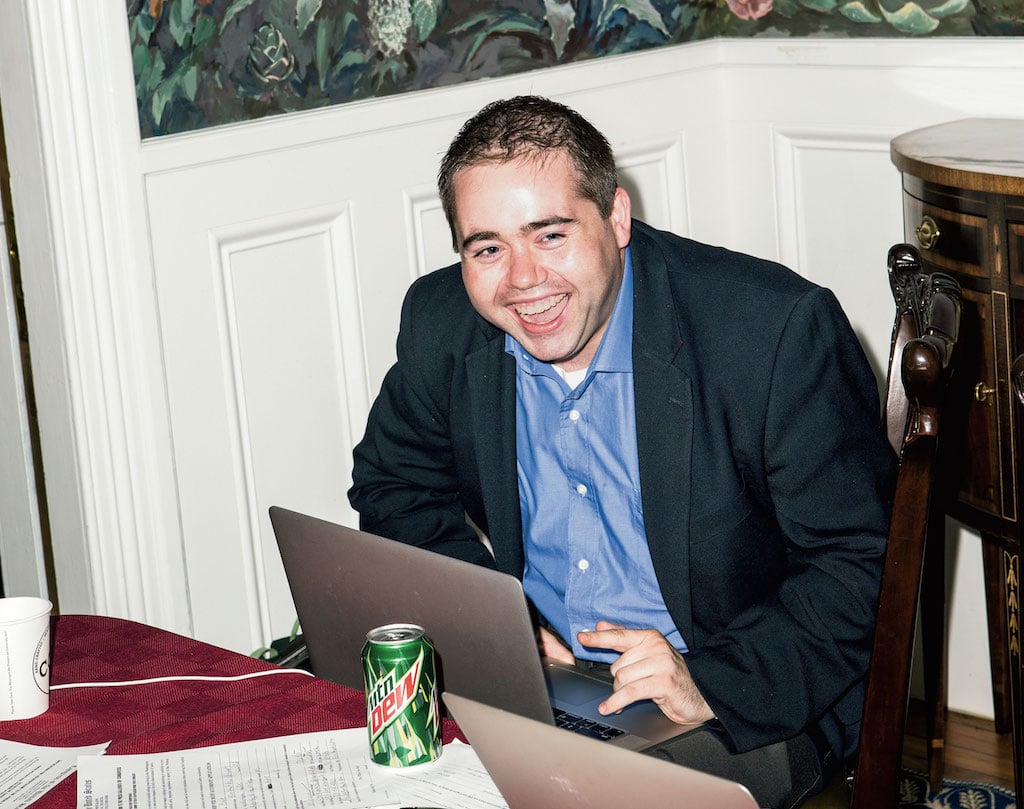
![Luke 008[2]-1 - Washingtonian](https://www.washingtonian.com/wp-content/uploads/2017/10/Luke-0082-1-e1509126354184.jpg)
